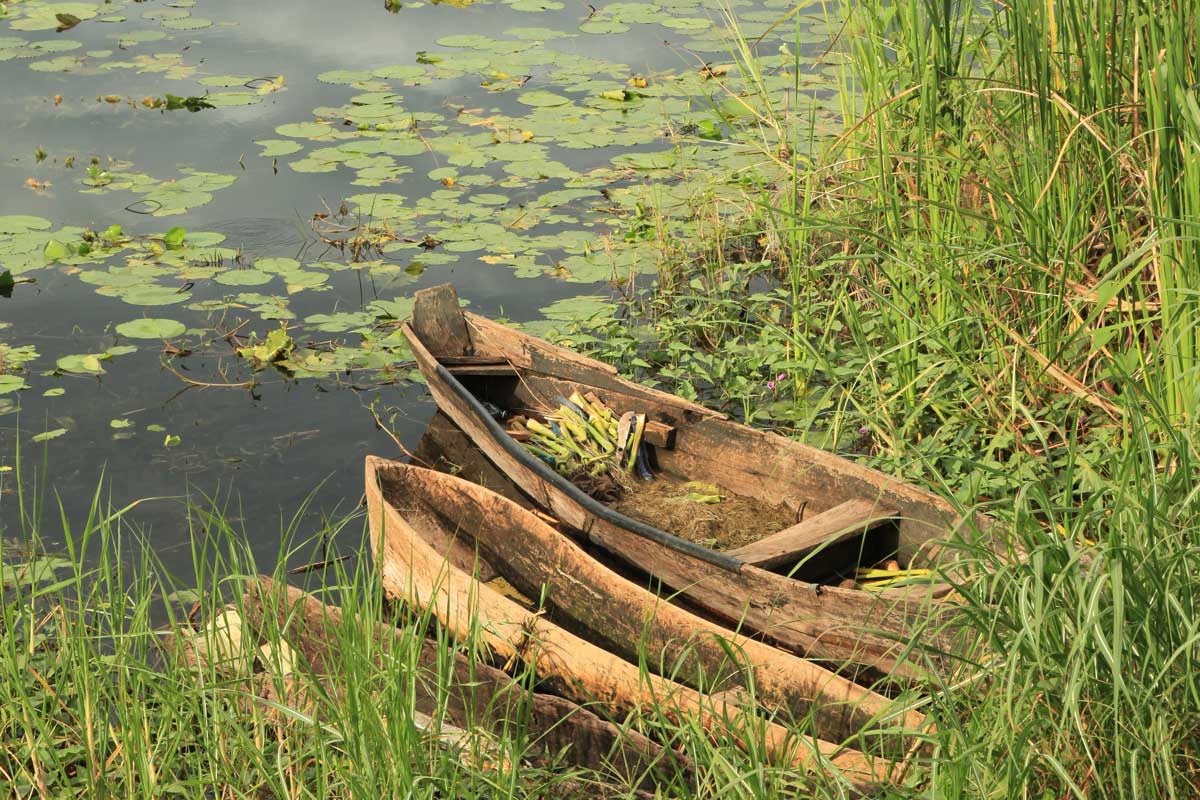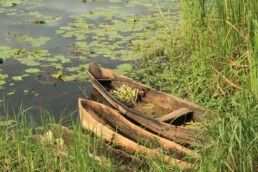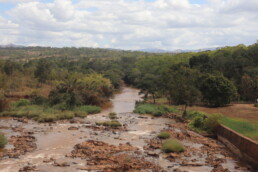Navigating transboundary waters in Eastern and Southern Africa
Water, a precious resource that knows no boundaries, plays a vital role in sustaining ecosystems and supporting socio-economic development. Effective management and governance of transboundary water resources are crucial to ensure sustainable development in regions where multiple countries share water bodies. John Owino, IUCN Eastern and Southern Africa’s Water Programme Officer sheds light on the BRIDGE initiative, the challenges faced in East Africa, and the importance of regional cooperation in transboundary water governance.
Please provide an overview of the BRIDGE initiative implemented by IUCN at the global and regional levels.
Building River Dialogue and Governance (BRIDGE) is an IUCN global initiative implemented in four regions – Africa, Asia, Central and South America at basin and regional levels. For more than 10 years now it has been funded by the Swiss Development Cooperation (SDC) and is now in its 5th phase (2022-2026).
BRIDGE aims to accelerate transboundary water resources management and development, safeguard water supply and sanitation and biodiversity conservation, and promote regional cooperation through water diplomacy. In ESARO, BRIDGE activities are implemented in partnership with the Intergovernmental Authority on Development (IGAD), East Africa Community (EAC) and Southern African Development Community (SADC) at regional levels and various transboundary basins such as Sio-Malaba-Malakisi (SMM), Mara, Kagera in Eastern Africa and Ruvuma, Save, Pungwe and Buzi in Southern Africa.
What does effective water resource management look like?
Effective water resource management involves multi-stakeholder participation, sustainable financing, good and sound policies, legal frameworks and institutional mechanisms that are transparent and accountable and yield results on the ground. Water is not only an economic but a social and environmental resource. Therefore, effective water resource management must take all these aspects into account.
How does the BRIDGE initiative contribute to transboundary water resources management and development?
Water, unlike people, does not recognise territorial boundaries. BRIDGE is assisting countries sharing transboundary basins to effectively manage and develop those basins jointly. This is done by strengthening the capacities of governments and stakeholders as well as promoting the development of transboundary water resource governance systems including policies, legal, institutional and financing mechanisms.
In ESARO, BRIDGE has supported the governments of Kenya and Uganda in developing the SMM Investment Plan and Financial Sustainability Strategy and is now helping with resource mobilisation for its implementation. At the regional level, BRIDGE has supported the IGAD Secretariat and its Member States in initiating the development of its Regional Water Resources Protocol as well as supporting the EAC Secretariat and its Partner States in developing the Regional Water Policy and IWRM Strategy.
What are some of the challenges faced in the management and development of transboundary water resources in East Africa? How does cooperation at the regional level help address these challenges and promote sustainable socio-economic development?
Territorial integrity and national interests are major challenges. Some countries would like to use the portion of the shared water resources that is within their boundaries as a national resource for their national interest rather than as a shared resource that requires regional collaboration and cooperation. Climate change has resulted in the reduction of water in rivers and aquifers and led to catchment degradation. This has posed a serious challenge as far as water security is concerned.
Regional policies and strategies such as the EAC water policy and IWRM strategy help promote cooperation in the management and development of transboundary water resources. At the global level the international community in 1997 enacted the United Nations Watercourses Convention and in 1992 the Helsinki water Convention, these two conventions provide a framework for the management and development of transboundary water resources.

Explain the role of IUCN ESARO in supporting transboundary water governance, management, and development at the EAC regional level?
IUCN ESARO has been supporting the strengthening of transboundary water governance, management and development through the development of a regional EAC Water Policy to be implemented through the EAC IWRM Strategy. These were considered and adopted in May 2022 by the EAC Sectoral Council on Environment and Natural Resources during its 8th session. The overall objective of the policy is to contribute to poverty reduction and sustainable development by guiding the EAC Partner States on water resource management, reconciling economic development, social equity and environmental protection. The Council subsequently directed the EAC Secretariat and urged the EAC Partner States to mobilise resources and implement the EAC Water Policy and IWRM Strategy.
Could you elaborate on the recent meeting held in Mwanza, Tanzania, by the EAC Regional Technical Working Group on Aquatic and Terrestrial Ecosystems?
The meeting held in Mwanza, Tanzania between May 23rd – 26th 2023, was a validation workshop for the initial project proposal to implement the EAC Policy and IWRM Strategy. The EAC Aquatic and Terrestrial Working Group reviewed and provided technical inputs to the revised draft Project Proposal for the implementation of the EAC IWRM Strategy. Members of the Working Group included senior government officials and experts drawn from the EAC Partner States’ ministries and institutions responsible for Water, Environment, Agriculture, Natural Resources Management and East African Community Affairs.
What are the potential risks and impacts of uncoordinated transboundary water resources governance in the EAC region?
The largely uncoordinated transboundary water resources governance potentially exposes the economy of EAC Partner States to water stress, scarcity and cross-border impacts. Cooperation in the development and management of the transboundary water resources is essential for a win-win benefit. This is because transboundary water resources covering surface water and groundwater, present opportunities for regional cooperation and support to national and regional socio-economic development. The sector faces challenges including ensuring water security to support sustainable socio-economic development and meeting the growing water demand; mitigating the impacts of and adapting to climate change and variable weather patterns; attaining the water-related SDGs; ensuring equity and sustainability in the utilization of water resources; and ensuring environmental sustainability.
SOURCE: IUCN Website
Enhancing Water Governance in the Ruvuma River Basin
The Ruvuma River Basin is a vital water source for communities, agriculture, and industries in Malawi, Tanzania and Mozambique. Learn how Southern African Development Community (SADC) Member States, in collaboration with IUCN through BRIDGE 5, are strengthening water cooperation in the region.
Imagine a river basin spanning 155,000 square kilometres, home to diverse wildlife and ecosystems, providing a lifeline to Mozambique, Tanzania, and Malawi. The Ruvuma River Basin is a vital water source for communities, agriculture, and industries in the region.
Despite its benefits, the basin has faced challenges such as inadequate management plans, climate extremes, limited information and stakeholder involvement, and insufficient investment and development strategies which have promoted the adoption of the SADC Revised Protocol on Shared Watercourses (2000). The Revised Protocol uses a framework within which water cooperation is embedded on. Relying on this framework, the Ruvuma Basin took steps to establish the Joint Water Commission to improve water cooperation via the joint water agreements, with support from the Southern African Development Community (SADC) Secretariat.
The Ruvuma Shared Watercourses Support Project was launched in 2009 with the support of the African Development Fund, However, this Joint Water Commission only benefited the Tanzanian and Mozambican states. As such, there are efforts currently to include Malawi, the third riparian state after Malawi expressed interest to actively participate in efforts to govern the transboundary basin with Mozambique and Tanzania; starting with the drafting of the MoU which will be finalised later this year.
Water cooperation in the region finds its footing in the SADC Protocol and based on this several interventions have been deployed in some basins in the region; and in the case of Ruvuma, FDB developed a Basin Monograph in 2013. Building on these initiatives, the BRIDGE program—BRIDGE 5—aims to enhance inclusive and rights-based approaches to water governance by utilising several of its diplomacy tools to pluck governance gaps within the basin through the development of new water-sharing agreements, basin strategies and a sustainability plan. BRIDGE utilises the IUCN Natural Resources Governance Framework, which has proven successful in similar contexts.

Photo: IUCN ESARO
Furthermore, leveraging past experiences BRIDGE seek to promote sustainable environmental management approaches including Nature-based Solutions (NbS) and Ecosystem-based adaptation (EbA) within the Ruvuma Basin.
To achieve these goals, the riparian states are working on establishing a Permanent Secretariat and Technical Committee to manage, coordinate, communicate, and monitor the Ruvuma Basin’s activities. The Joint Ruvuma IWRM Strategy, the establishment of the Permanent Secretariat, and resource mobilization for critical initiatives including irrigation systems and hydropower development are top priorities.
IUCN in collaboration with WaterNet are developing the Ruvuma Basin Stakeholder Engagement Strategy, informed by comprehensive Stakeholder Mapping activities in the riparian states. The strategy will outline stakeholders such as domestic uses, subsistence farmers, small-scale farmers, and businesses, and outline existing monitoring and reporting on the basin’s state and water uses. IUCN will also launch a multi-purpose website, co-developed with riparian countries, which will serve as a vital communication platform, providing knowledge and information.
Ultimately, the riparian states’ initiative on the Ruvuma River Basin aims to establish integrated water resources management, develop physical infrastructure, support regional integration, and alleviate poverty. This approach promises a brighter future for the people and nature relying on the Ruvuma River Basin’s life-sustaining waters.
Source: IUCN Website


